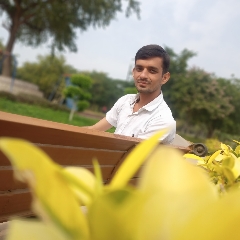Question Text
Question 2 :
Mass of Mars is $6.42 × 10^{29}$ kg and mass of the Sun is $1.99 × 10^{30}$ kg. What is the total mass?
Question 7 :
If a = – 1, b = 2, then find the value of $a^b+b^{a}$
Question 8 :
<img style='object-fit:contain' src='https://teachmint.storage.googleapis.com/question_assets/cbse_ncert/61b1cccdf59b460d7261edec.PNG' />
Refer to the above image. Determine whether there is a single repeater machine that will do the same work. If so, describe it.
Question 9 :
By what number should $(–15)^{–1}$ be divided so that the quotient may be equal to $(–5)^{–1}$?
Question 13 :
Express in standard form: Size of a bacteria is 0.0000005 m
Question 15 :
State true or false: Very small numbers can be expressed in standard form using positive exponents.
Question 18 :
Express the result in power notation with positive exponent.$(-3)^4 \times (\frac{5}{3})^4$
Question 23 :
State true or false: Exponential notation is a powerful way to express repeated multiplication of the same number
Question 26 :
In a stack there are 5 books each of thickness 20 mm and 5 paper sheets each of thickness 0.016 mm. What is the total thickness of the stack.
Question 31 :
A particular star is at a distance of about $8.1\times10^{13}$ km from the Earth. Assuring that light travels at $3\times10^8$ m per second, find how long does light takes from that star to reach the Earth.
Question 34 :
<img style='object-fit:contain' src='https://teachmint.storage.googleapis.com/question_assets/cbse_ncert/61b1cccbf59b460d7261ede9.PNG' />
From the above figure, find a single repeater machine that will do the same work as each hook-up.
Question 37 :
Find m so that $(–3)^{m + 1} × (–3)^5 = (–3)^7$
Question 38 :
State true or false: For any non-zero integer a, $a^{(-m)} = 1/a^m$
























